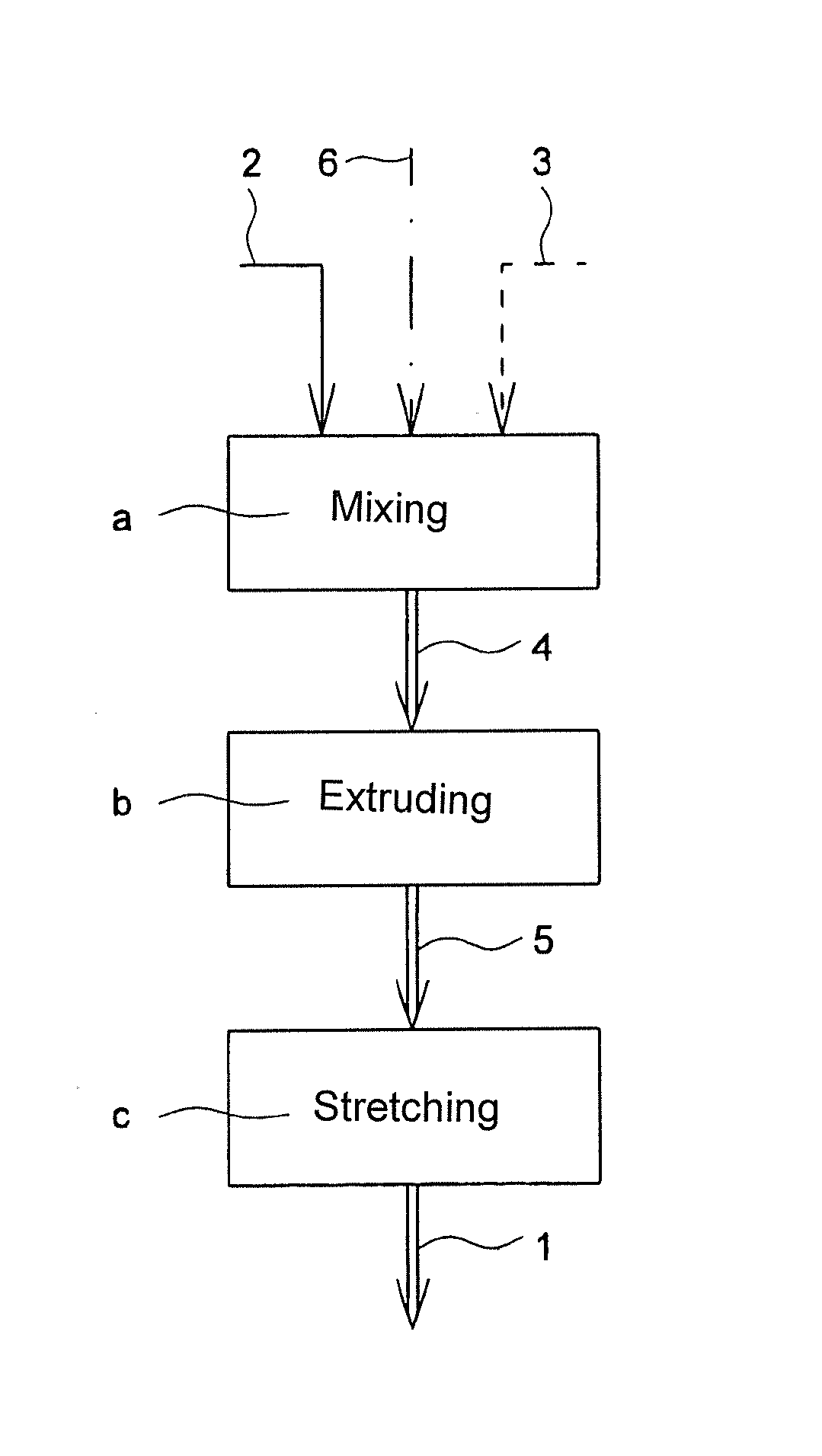Method for the production of a filter membrane and filter membrane
- Summary
- Abstract
- Description
- Claims
- Application Information
AI Technical Summary
Benefits of technology
Problems solved by technology
Method used
Image
Examples
example 1
[0040]LDPE was used as a polymer membrane material for the production of a polymer film. Chalk was admixed into the membrane material as filler with a mean particle diameter of approximately 2 μm. Then, the thus obtained mixture was extruded for forming the polymer film. The chalk content of the polymer film was 65% by weight, and the LDPE content was 35% by weight. The thickness of the polymer film was 90 μm. The polymer film was stretched by a factor of 4 at 85° C., and the thickness of the polymer film was then 25 μm. The flow rate of the polymer film at a pressure differential of 5 bar was 160 l / (m2h bar), and the permeate was free of turbidity.
example 2
[0041]LDPE was used as a polymer membrane material for the production of a polymer film. Mica was admixed into the membrane material as filler with a mean particle diameter of approximately 8.5 μm. Then, the thus obtained mixture was extruded for forming the polymer film. The mica content of the polymer film was 55% by weight, and the LDPE content was 45% by weight. The thickness of the polymer film was 150 μm. The polymer film was stretched by a factor of 3 at 110° C., and the thickness of the polymer film was then 50 μm. The flow rate of the polymer film at a pressure differential of 5 bar was 120 l / (m2h bar), and the permeate was free of turbidity.
example 3
[0042]PP was used as a polymer membrane material for the production of a polymer film. As filler with a mean particle diameter of approximately 5 μm, barium sulfate and calcium sulfate were admixed into the membrane material. Then, the thus obtained mixture was extruded for forming the polymer film. The barium sulfate content of the polymer film was 25% by weight, the calcium sulfate content of the polymer film was 25% by weight, and the PP content was 50% by weight. The thickness of the polymer film was 100 μm. The polymer film was stretched by a factor of 3.5 at 110° C., and the thickness of the polymer film was then 30 μm. The flow rate of the polymer film at a pressure differential of 5 bar was 200 l / (m2h.bar), and the permeate was free of turbidity.
PUM
| Property | Measurement | Unit |
|---|---|---|
| Temperature | aaaaa | aaaaa |
| Temperature | aaaaa | aaaaa |
| Percent by mass | aaaaa | aaaaa |
Abstract
Description
Claims
Application Information
 Login to View More
Login to View More - R&D
- Intellectual Property
- Life Sciences
- Materials
- Tech Scout
- Unparalleled Data Quality
- Higher Quality Content
- 60% Fewer Hallucinations
Browse by: Latest US Patents, China's latest patents, Technical Efficacy Thesaurus, Application Domain, Technology Topic, Popular Technical Reports.
© 2025 PatSnap. All rights reserved.Legal|Privacy policy|Modern Slavery Act Transparency Statement|Sitemap|About US| Contact US: help@patsnap.com

